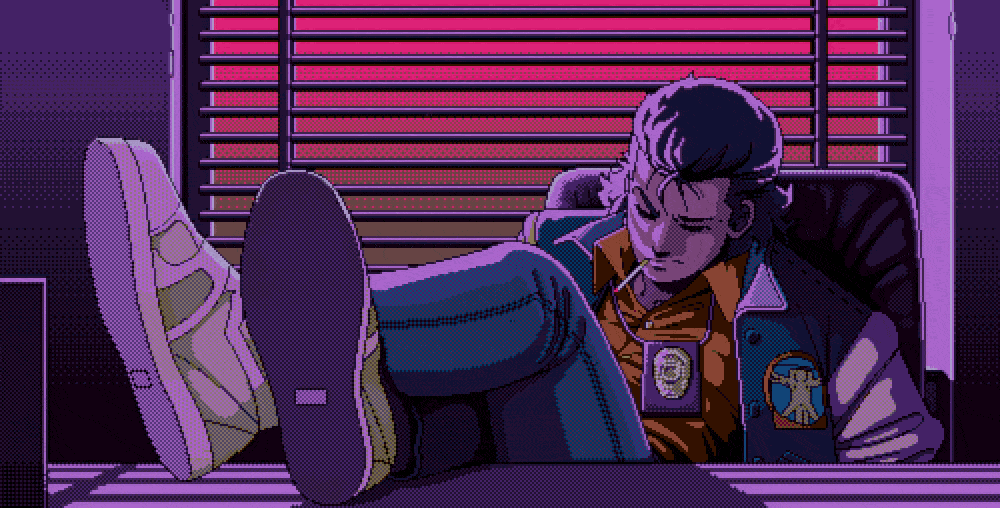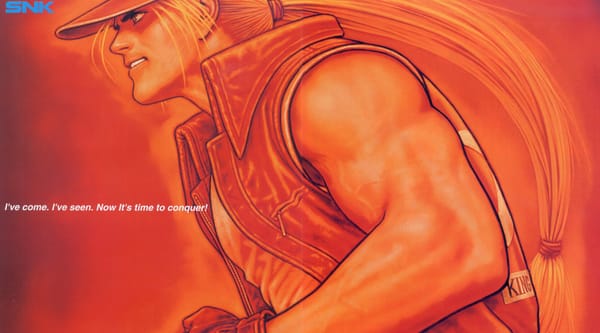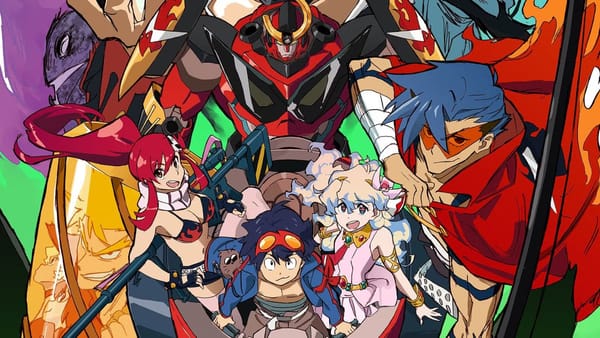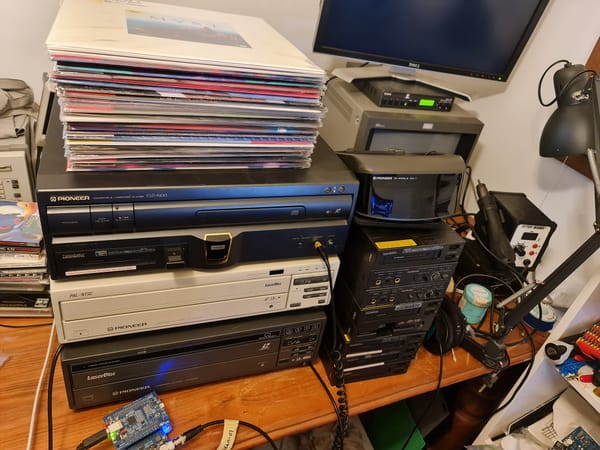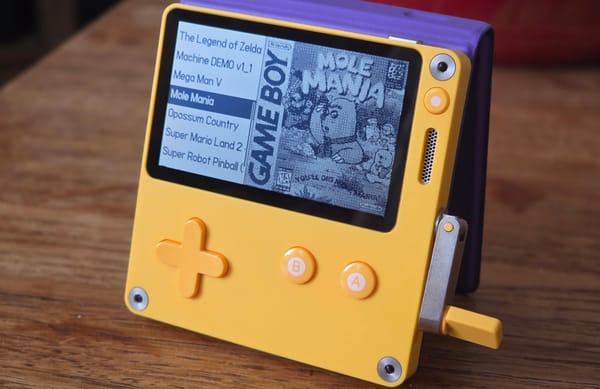Just in time for Halloween: Aeon Genesis returns with Screaming Mad George's pinball nightmare
Veteran hacker Gideon Zhi talks ParanoiaScape. Plus: We check back in with Playdate emulator CrankBoy.
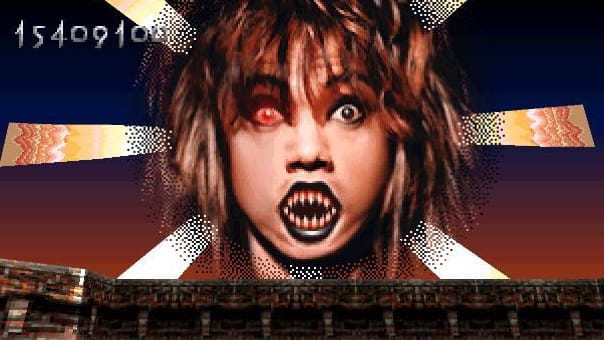
This issue of Read Only Memo is brought to you by ~ serendipity ~. When the news dropped this week that there was a fresh fan translation of a horror pinball game — just days before I was set to hop on a plane to spend the weekend playing pinball at the Portland Retro Gaming Expo — well, I knew I had my lead story. Nothing else would do!
Before this week's main story, though, I've brought back a little bonus mini feature I haven't done in the newsletter for quite some time: Guest.cue. It's a special occassion, because this week saw the launch of a new site that I'm thrilled about: Design Room.
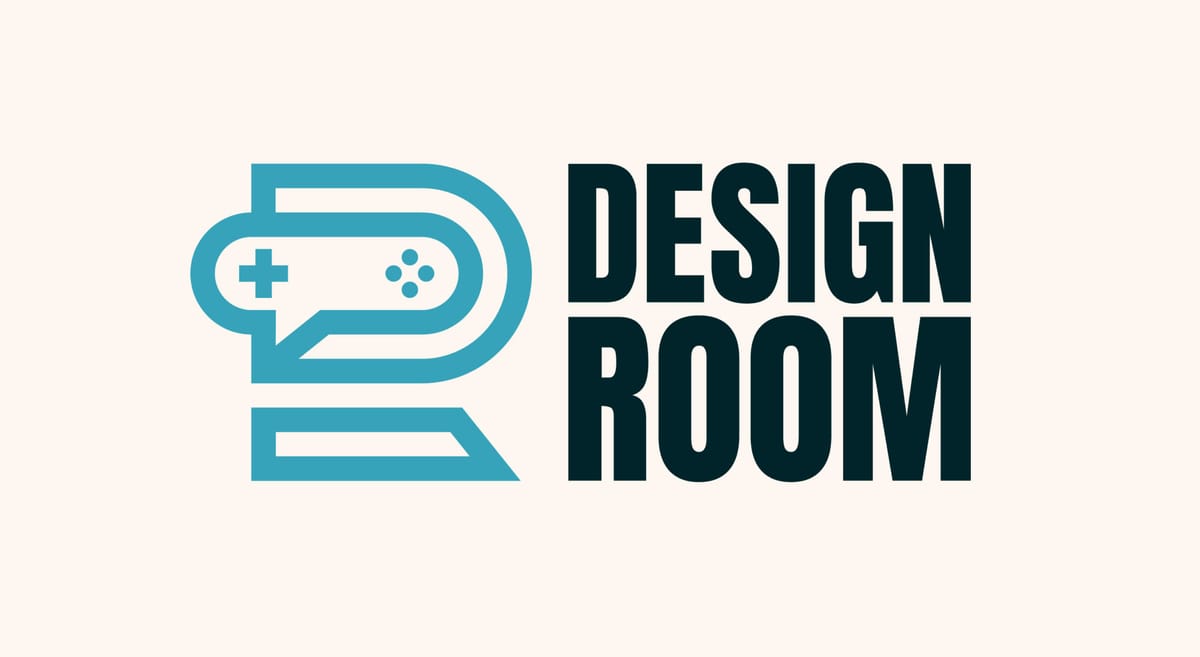
In the words of creator Matt Leone, Design Room is all about one very specific thing, and not about a whole lot of other things you might expect from a media site in 2025: "We don’t post news, host a podcast, stream on Twitch, run a YouTube channel, or have the typical heartbeat of a games media outlet. We just focus on two things: oral histories that are free for everyone to read, and bonus stories that are exclusive to paid subscribers."
If you don't know Matt's name, that's probably because he's spent much of his career as a writer and editor who puts the story and the publication first — at 1UP, and then for more than a decade at Polygon until it was sold earlier this year — rather than building up a following on social media or through streaming. In other words, he's picked the absolute hardest way to make it as an independent journalist on the internet of 2025.
But at Design Room he's offering something you genuinely can't get anywhere else: Painstakingly researched and assembled stories about games told by the people who made them, crafted by a passionate editor rather than a public relations team. Matt's been doing this sort of thing for a long time: Back at 1UP, for example, he wrote about the Steven Spielberg game that never came to be, LMNO. As an editor at Polygon he honed in on the oral history format, covering the likes of FF7, Street Fighter 2, and my favorite, Panzer Dragoon Saga:
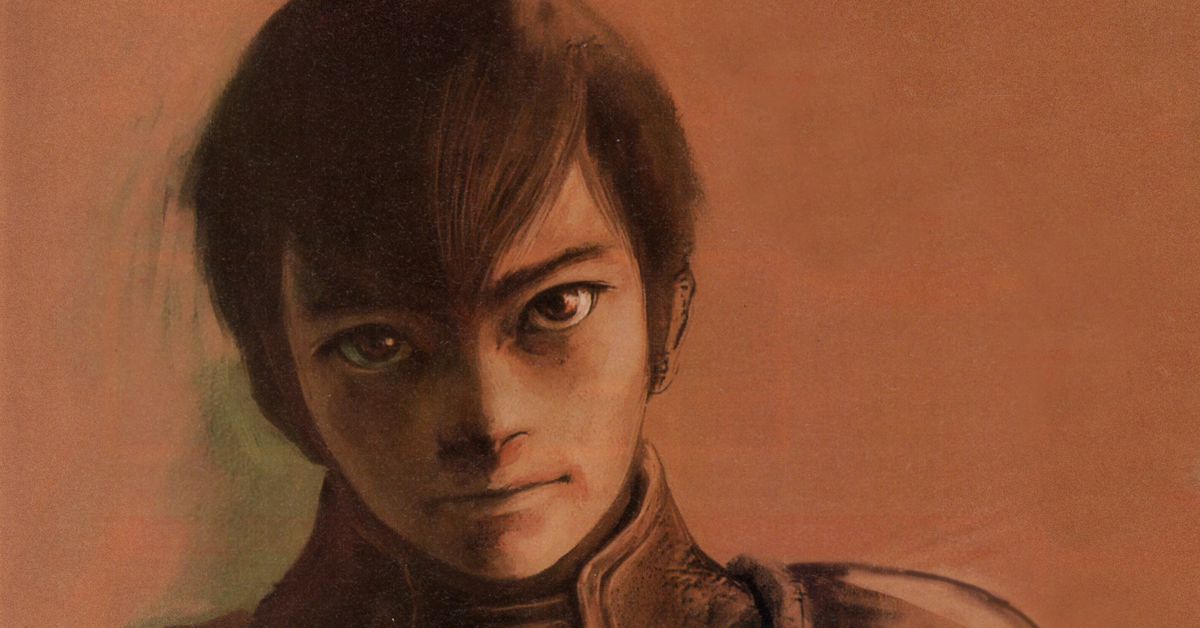
"These were some of the least practical stories Polygon produced, with the larger ones requiring hundreds of hours of reporting in addition to translation, illustration, photography, design, travel, copy editing, etc." Matt wrote on Design Room's new site. "I love the format, though. I love how it brings candid conversations out of people, how it blends lighthearted anecdotes with serious discussions, and how it gives context to stories we often only hear from one perspective. The goal with Design Room is not just to do more of these stories, but to build a place where we can do the best possible versions of them, free of the external pressures that come with running a bigger outlet."
Design Room's debut feature is a 10,000 word making-of for Shadow of the Colossus (just in time for its 20th anniversary!) complete with new, custom artwork. It's a beauty! I subscribed immediately and hope at least a few of you will, too.
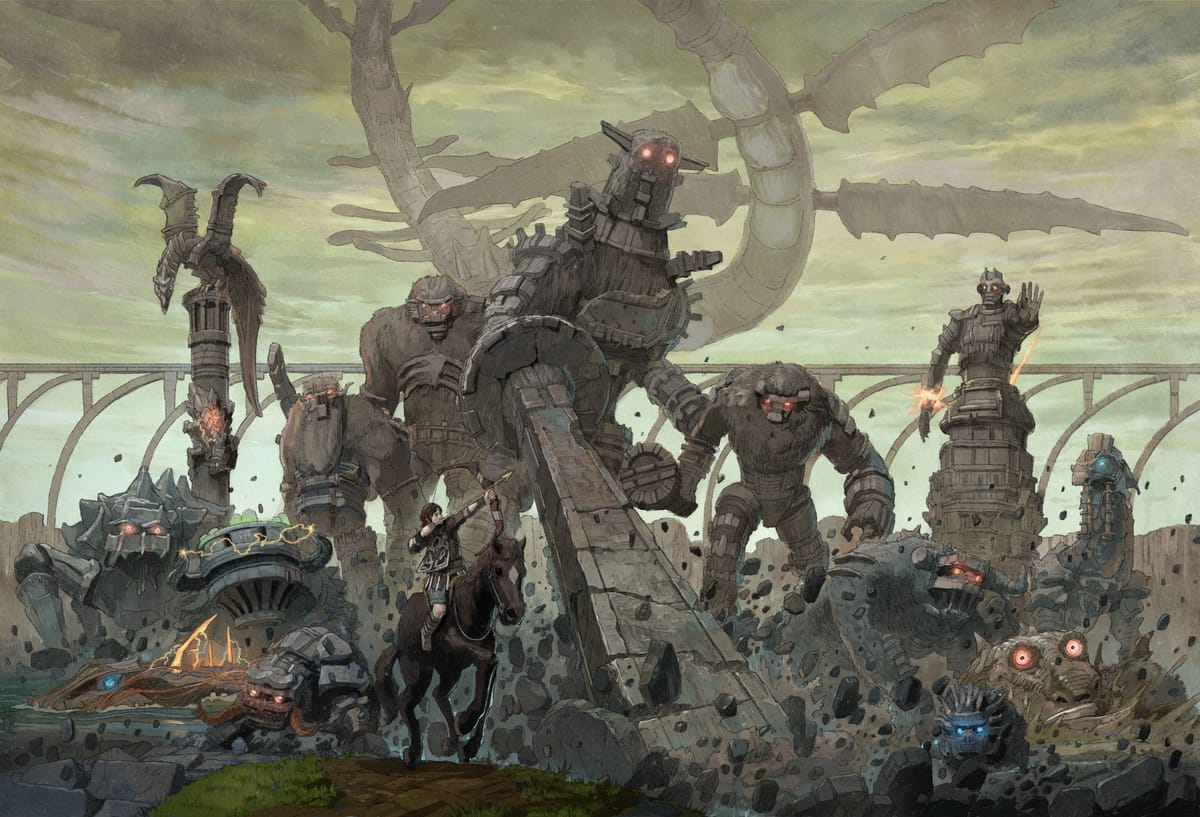
But before you go, here's an emulation-focused anecdote from Matt that ties into all of the above. Enjoy!
Guest.cue: Design Room's Matt Leone on chasing the rainbow (edition) of Street Fighter 2
Matt Leone is a veteran games journalist, formerly of 1UP.com and Polygon, where you may know him best for producing exhaustive oral histories; his features on Final Fantasy 7 and Street Fighter 2 have been published as beautiful hardback books. He also once interviewed me for a job that I didn't take — sorry Matt!! — but I was fortunate to learn from him early in my career. His new independent site Design Room will be home to new, reader-supported oral histories. Sign up!
Street Fighter 2: Champion Edition | 199? | Developer: Capcom | Fighting
About a decade ago, I became obsessed with trying to write a story about the infamous hacked “Rainbow Edition” of Street Fighter 2: Champion Edition. Or at least, that’s what I thought it was called when I was growing up. That’s what I'd read about in magazines, and that’s what we called it when we were throwing midair fireballs at the comic book store.
I’d heard the stories from Capcom about how this version of the game inspired Hyper Fighting, and I thought it would be interesting to track down whoever was responsible for making it. So I started asking around… and got nowhere. The people I talked to couldn’t even agree on the country it came from, much less who was involved. And I remember at some point along the way I started digging through emulated versions of Champion Edition to see if I could find any clues. In doing so, I discovered there were actually dozens of hacked versions of the game. As I looked through them, it became clear that the game I had thought of as “Rainbow Edition” was a bunch of different versions that I’d conflated in my head. Accelerator! Red Wave. Etc.
I realized this wasn’t a story of one game, but of a lot of different ones. And if tracking one down was going to be hard, tracking them all down would be impossible. So I gave up on the story, but I loved how much I was able to learn about a key moment in the history of a franchise like that. Not by looking at not by looking through other reporting or talking to people, but just by looking through ROMs. I love emulation for a lot of reasons, but as someone who reports on old games, I might put fact checking on the top of that list. – Matt Leone
ROM Trivia
- Want to play one of the many, many hacked variants of Street Fighter 2? Here's a pack with more than a dozen.
- The legend of Rainbow Edition persists: just last year Modern Vintage Gamer made a video about its history and influence
The Big Two
2. Don't call it a comeback: Aeon Genesis's ParanoiaScape fan translation

ParanoiaScape: "A game which is surely created for the sole purpose of making the player feel uneasy," ventures Did You Know Gaming in its 2020 video. What was the giveaway: the name, credited creator Screaming Mad George, or the pukeworthy concept of first-person pinball in some kinda fleshy tunnel?? I cannot believe the creator of this game, aka musician and artist Joji Tani, also directed the freakin' live action Guyver movie starring Mark Hamill. It's a mad, mad, mad, mad world.
So why are we talkin' about ParanoiaScape, anyway? Well, not only has this true oddity from the PS1 just gotten a fan translation for its small amount of Japanese text, but it's SpoOoOoOokyyy Season!
Oh, and more importantly: it's the first fan translation release from hacker Gideon Zhi's group Aeon Genesis in nearly six years, and that is worth digging into.
"The last few years have been really ridiculously weird," says Gideon Zhi — he's gone through a string of ups and downs, from a promotion to a tech layoff to a hellish job hunt. But in the time that he hasn't been releasing fan translations under the Aeon Genesis name, he's still been keeping busy helping out Retro-Bit with updated ports of old games.
"I'm actually really grateful for Retro-Bit and my other client — the work I've been doing for them has helped keep me afloat during the between-jobs interim," he says. "All that said though I haven't ever really stopped working on things. It may be slow sometimes and not the first thing on my mind, but I truly never did stop."
Gideon Zhi has been hacking games for more than 25 years now, meaning he's been there since the very early days. The more than 90 translations in the Aeon Genesis portfolio are a testament to how prolific those first 20 years were. He's been quiet recently, but that doesn't mean he hasn't been chipping away at stuff in the background.
"I've been looking to improve my hacking skills for the PS1 in general," he says. "There's a short list of games I'd like to take a look at but hacking something with a file system is fairly different from just editing the flat binaries from older cartridge consoles, and I wanted a few smaller projects to help get my feet wet."
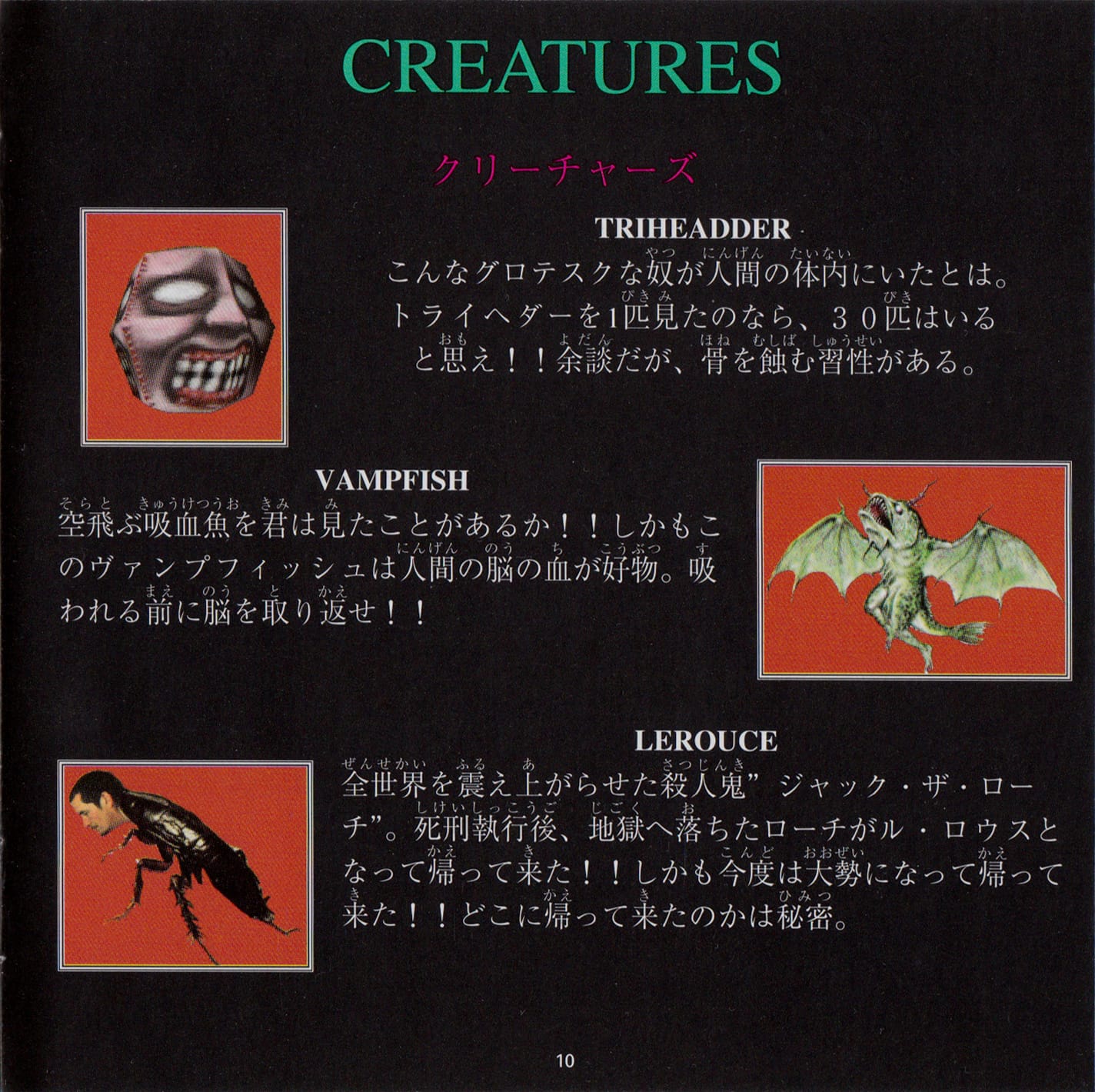
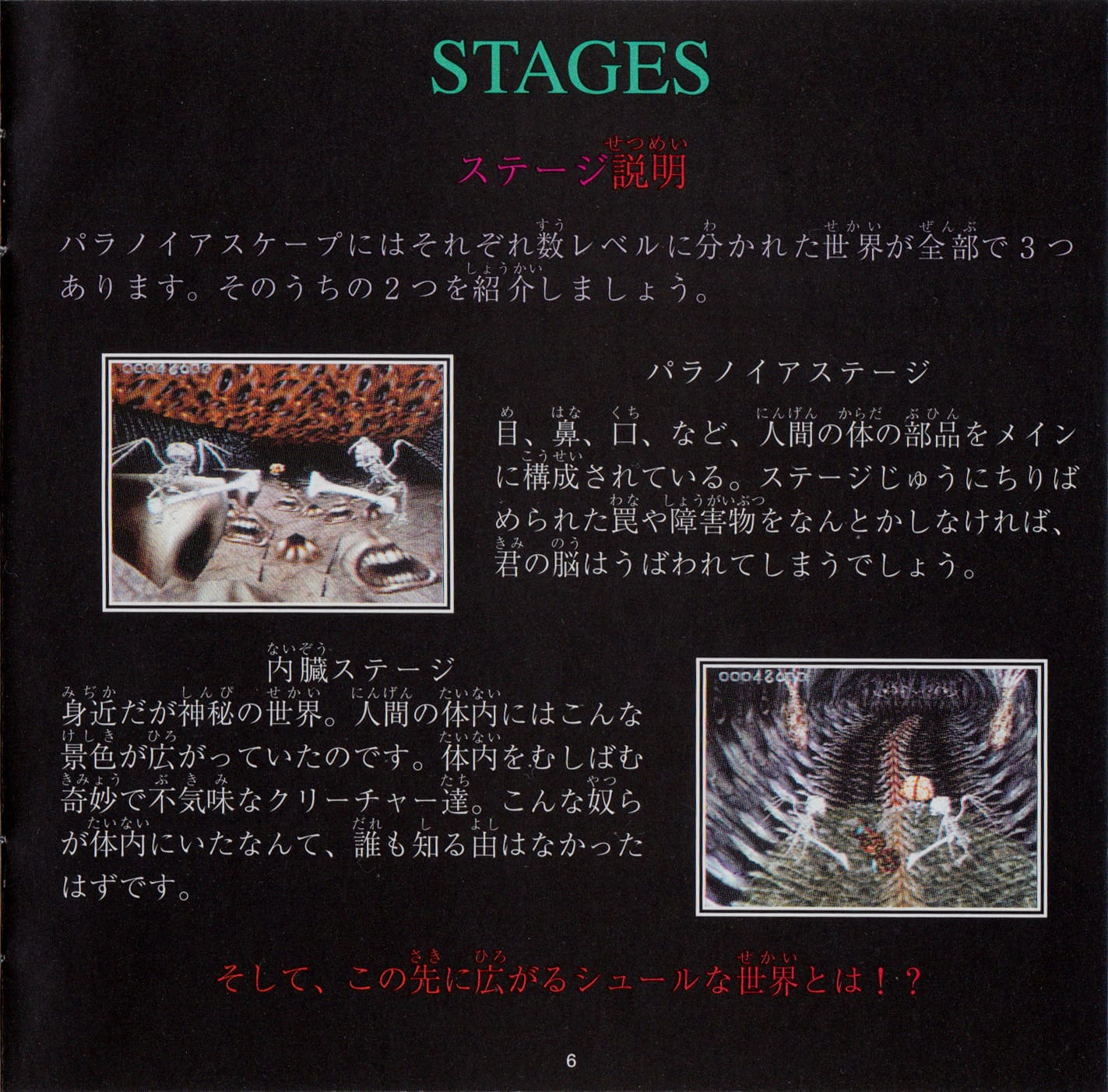
Specifically, this game gave him a reason to get some experience with PS1 emulator Duckstation and the decompiler Ghidra, which has become particularly popular among game hackers in recent years; Hilltop Works made a whole video about it last year.
Even with the new tools, it was a quick job. It took Gideon Zhi only a few days of hacking earlier this year to pick apart ParanoiaScape, all of which he did back in March; it just took awhile to get around to having folks help test it. He'd never heard of the game until the Insert Credit podcast mentioned it last year, and had no idea that he'd end up stumbling upon unused English audio files on the disc recorded by Mad George himself (those get a mention in the video above). Compared to some of the RPGs that Aeon Genesis has tackled in the past, there didn't end up being much Japanese text to deal with:
"One of the first things I do for any project is identify which pieces of the game actually need to be translated or changed. In this game's case, that ended up being the objective screens that appear before each stage, a typo in the game's (already English) ending text that needed to be fixed, and the voice samples from Screaming Mad George in 3-2 informing the player of whether they hit correct or incorrect target... the original plan was to either find a way to soft-sub the clips or to dub them somehow. I had it in my head that we might actually be able to reach out to Screaming Mad George himself and get him to record English clips for the game via a service like Cameo or something, or at the very least find a soundalike. But the first step in that process is actually extracting the clips themselves.
The actual recordings are stored in a couple of larger binaries, basically just a combination of a bunch of files with an index. After they'd been extracted it was immediately clear that some of the clips were in English, but I figured maybe those were used elsewhere in the game. It wasn't until I started passing the Japanese clips to Matatabi (translator for the project) that it became clear that they were actually English versions of the Japanese lines. So yes, it was a surprise, and a nice one at that — though it did kind of torpedo the whole 'practice adding subtitles' part of the project."
Ghidra ended up proving particularly useful in sorting out how to implement the correct English voice lines in the right places. The sound files were randomly scattered, but the game triggers specific, escalating reactions as you hit or miss targets — getting those right required matching the correct English reaction to the equivalent in Japanese. Ghidra's ability to "import standard libraries so you can search for, for instance, calls to play audio clips or to print text" made it much easier to organize all the places where the audio was being triggered.
Aeon Genesis may have been quiet for a few years, but ParanoiaScape is the first of several quicker projects Gideon Zhi started in 2025. Expect the wait for the next PS1 release to be a whole lot shorter.
2. CrankBoy gets faster, sounds sharper, and has now set its sights on the Game Boy Color

Two months after my issue of ROM featuring Playdate emulator CrankBoy, the developers have been busy busy busyyyy. Version 1.10, released this week, represents some big gains over what was already mighty impressive running on the lil yellow handheld. Here are a few of the highlights from the Github page:
- Improved Audio: New audio timing option and more accurate audio emulation.
- Visual Enhancements: Added support for ghost frame and frame blending effects.
- In-App Downloads: Download ROM patches and hacks directly from within CrankBoy.
- Save State Compatibility: Added save state support for games that have their built-in save slots (e.g., Pokémon).
The improved audio is multi-faceted, including support for stereo in addition to mono and a new buffering system for more accurate timing. The ghost frame / frame blending features are primarily to support games that have to run at 30 fps to avoid slowdown to avoid issue with certain sprites becoming transparent.
There are also new ways you can use the crank with some game-specific scripts, like in Link's Awakening's fishing minigame. If more folks who use the emulator get involved in contributing, we could see some other cool features like that pop up, too.
Developer Sodium tells me that version 1.2 is already underway, and will add the ability to download Game Boy homebrew from within the app. That's sweet, but even sweeter is the prospect of Game Boy Color support, with one game working at this point in development. Now I'm wondering: How many GBC games will still look great on that 1-bit screen?
If you'd like to follow along and support CrankBoy developers stonerl and Sodium, you can find them on Patreon.
Patching In

Ymir passes 90% Saturn compatibility – I first wrote about this Saturn emulator, which debuted in May 2025, in the Dinosaur Planet Recompiled issue, and the latest release has hit a big milestone: "over 90% compatibility over the whole collection of Saturn games with the majority of games working flawlessly or with minor issues." According to dev StrikerX3, this release's new low-level CD block emulation feature is a big reason why: "When enabled, it greatly improves emulation accuracy of the CD drive and the commands sent by games... at least 23 games are now capable of going in-game or have major issues fixed when this option is enabled."
Ymir has a built-in auto updater now, too, so it's easy to stay on top of updates, which have been dropping about once a month since this summer. Lots of interesting detail to read up on in the release notes!
Fresh bling for Ryubing – The Ryujinx successor was recently updated to support the most recent patches to Tears of the Kingdom and Breath of the Wild (1.4.2 and 1.8.2), as well as "other games using the new audio renderer revision, such as newer updates for the Nintendo Classics emulators." The emulator's also seen a good bit of UI clean-up and some underlying improvements to CPU and memory emulation, with video playback specifically called out as potentially less stuttery now. Ryujinx lives!
PCSX2 lets you track your patches – A really small UI tweak here, but a nice one. You can now configure PCSX2's on-screen display to note how many custom patches you're using in a game, broken up like so: "DB = GameDB patches, P = Patches (Widescreen, No-Interlacing, etc), C = Cheats." If nothing else it'll be a nice bit of reassurance when you want an at-a-glance way to check if a patch you thought you enabled is working.
Core Report

MiSTer NES core sees new mappers and more – The NES core recently got some attention for being the most accurate option this side of real hardware, so now of course it's getting even better. Specifically, developer Kitrinx has done a rework of the PPU to better support complex and timing-sensitive mappers; other contributors have added more mappers, too; grab the latest fron the unstable-nightlies channel in the Discord.
Here's a fun thread on getting sprite shadows just right – Click through for a short but fun thread from longtime MiSTer contributor Martin Donlon about how to get this arcade board's sprite emulation juuuuust right. supports two additional games: Football Champ and Ah Eikou no Koshien.
The latest version of the Taito F2 core fixes the shadows in PuLiRuLa so they "shimmer" like you see in the video. The shadows are just the character sprites drawn with a black color palette and scaled down vertically. So what makes them shimmer?
— Martin Donlon (@wickerwaka.com) 2025-10-12T15:31:46.607Z
Translation Station

Di Gi Charat Fantasy in English? Excellent – Translator gopicolo has tackled this visual novel adaptation of an extremely early '00s anime/manga. I am now thinking of Chobits and Excel Saga and other such things of the era with BIG EYES.
TMNT NES to SNES is a form of translation, right? – Longtime romhacker Infidelity has completed his latest porting effort, releasing the NES Teenage Mutant Ninja Turtles game on the SNES. I wrote about one of his earliest ports two years ago: Zelda. It's a beauty.
Good pixels

It's been a minute since our last PC-98 grab bag, soooooo:
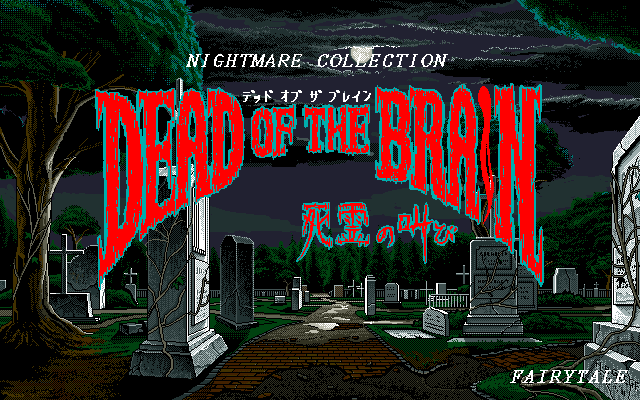
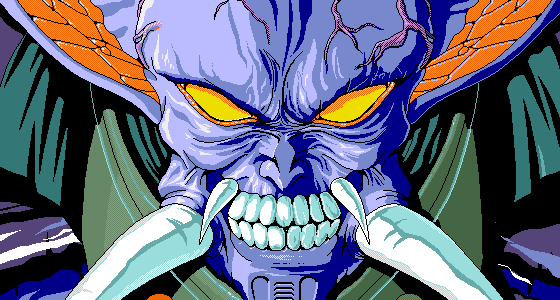
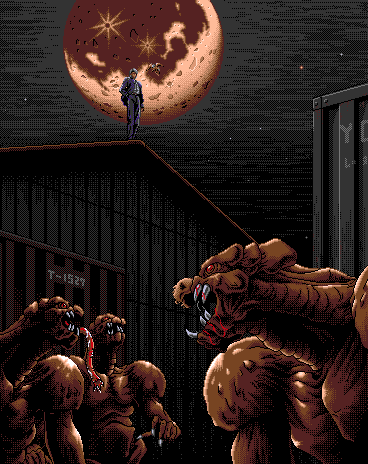
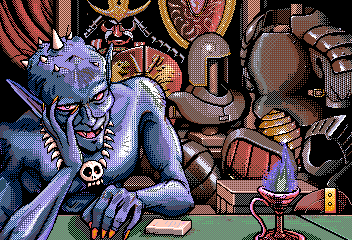
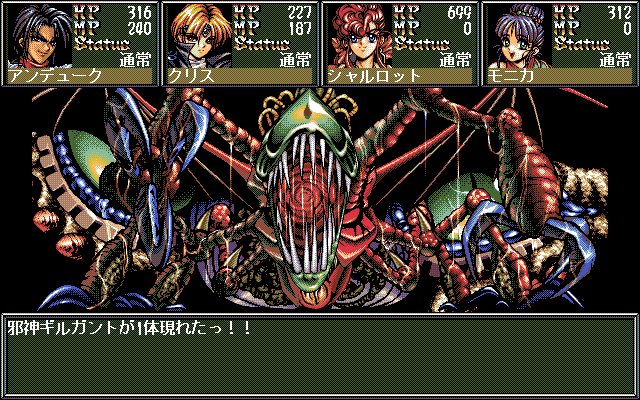
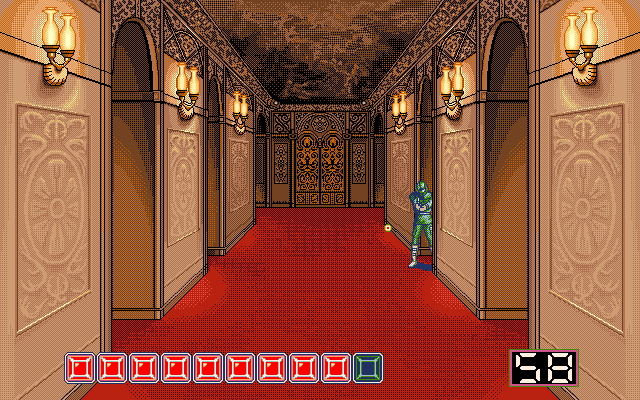
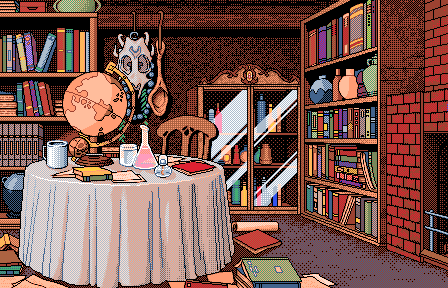
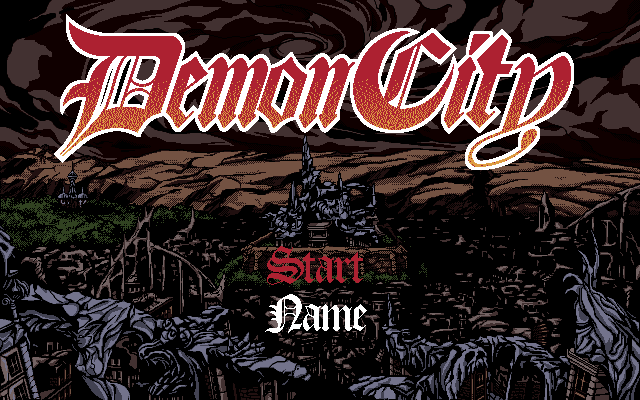
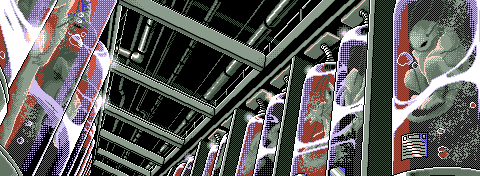
Images via the PC-98 Mega Pack
Till next time. 💽



